Music Theory Lesson No.1a for Classical Guitar: Pitch Direction and Letter Names. I’ll be teaching classical music theory lessons and relating it to the keyboard, guitar, and notation to see the implications of music theory on the instrument. This first theory lesson might seem rudimentary but it’s the essential first step in orienting ourselves to both music notation and our instrument. Here’s the Youtube link if you want to watch it there.
Pitch
The word pitch describes how high or low a note sounds. This is literally governed by the rate of vibrations producing it, in this case, from the strings. A classic organization of high and low pitch groups is the vocal comparison of soprano, alto, tenor, bass, which are classifications of singing voice, based on the range of pitches a voice can comfortably produce. Soprano being the highest, then alto, then tenor, and bass being the lowest.
The below content is all explained in the video.
Pitch Direction on the Piano Keyboard
High and low pitch direction on the keyboard is quite simple. The keys to the right get higher in pitch, the keys to the left get lower in pitch.
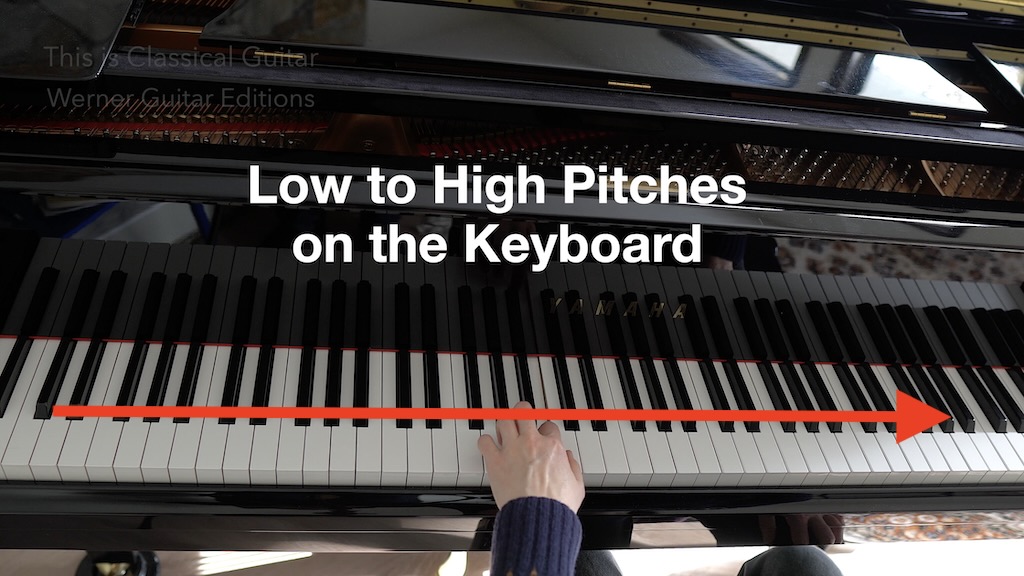
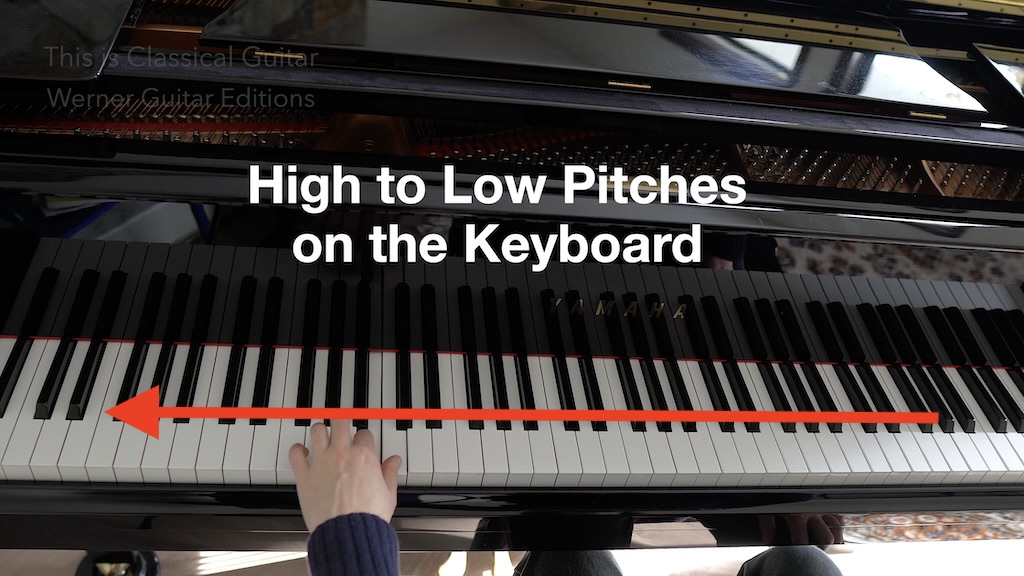
Pitch Direction on the Guitar
High and low pitch direction on the guitar is a little bit more complex.
- On a single string, frets from the head of the guitar toward the bridge get higher in pitch
- On a single string, frets from the bridge to the head get lower it pitch.
- Additionally, playing across the strings gets higher in pitch from the low E to the high E string.
- You can also travel across the fretboard combining the two ways.

Pitch Direction in Music Notation
High and low pitch direction in music notation is quite simple. Notes higher up the staff get higher in pitch and notes lower down the staff get lower in pitch. The staff is the five lines which we will discuss in the following lessons.


Letter Names in the Musical Alphabet
The Letter Names in the Musical Alphabet are ABCDEFG
These repeat continuously getting either higher in pitch or lower in pitch.
CDEFGABCDEFGABC – Continuous on keyboard
CDEFGABCDEFGABC – Continuous on Guitar
As you can see below the letters on the white keys of the piano repeat from one C to the next. The C higher than the first is one octave higher but you don’t need to know this terminology yet.
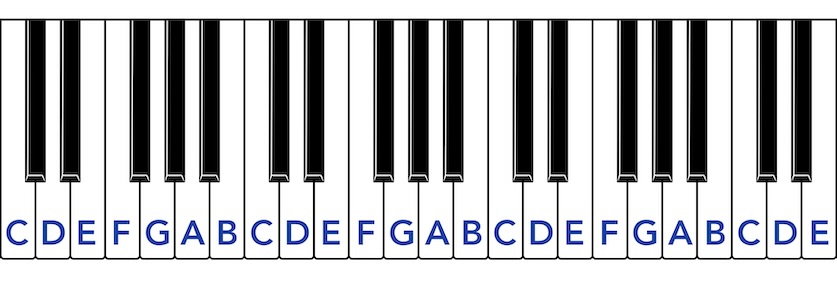
There are actually 12 pitches in the musical alphabet when we learn about accidentals (sharps and flats) but we’ll cover that in a future lesson. But as a basic intro, the white keys of the keyboard are CDEFGABC and the black keys are the accidentals (sharps and flats). You don’t need to remember this, it will be covered in a future lesson.
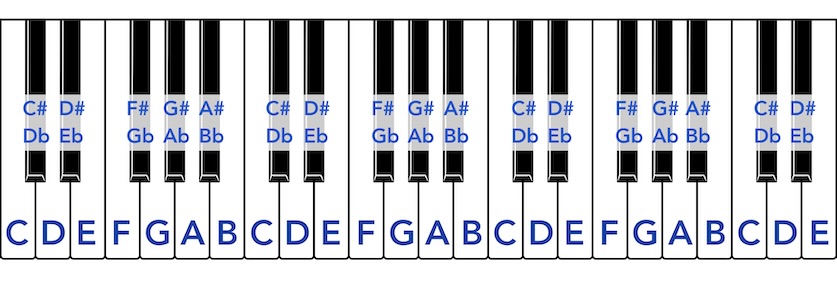
See the video above for a demonstration of continuous lettering on the guitar.
Hope you found that helpful. Find more theory lessons on the Music Theory Lessons page. I’m offering these lessons free of charge but feel free to support the site here. If you need any clarification on this particular lesson please leave a comment below.

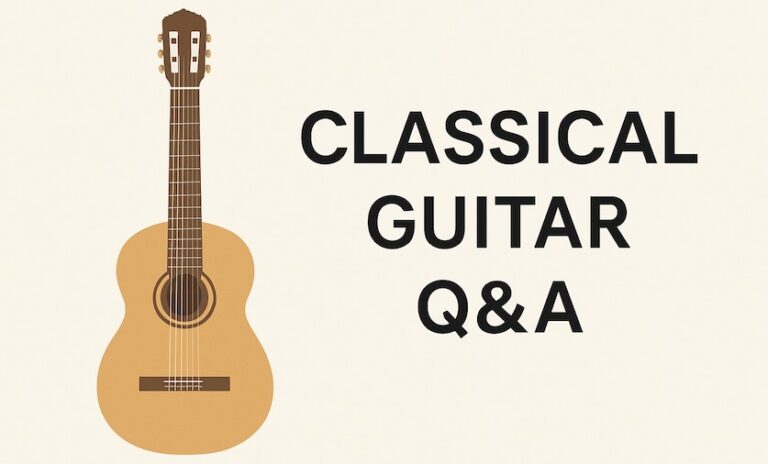

It’s hard to find theory pertaining to guitar. Really excited about future lessons! Love everything about your site❤️
Ótima matéria. Sempre quis entender como o autor consegue relacionar uma nota a outra dando sentido a música. Vou acompanhar de perto este assunto. A primeira aula já captei alguns nomes aplicados na teoria. Vamos para a segunda aula. Muito obrigado Mestre. Atendeu-me sem eu pedir. Antecipou minha busca por eu querer entender esse assunto. Bom final de semana!